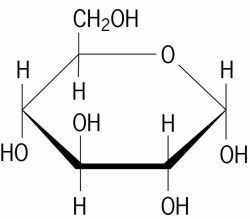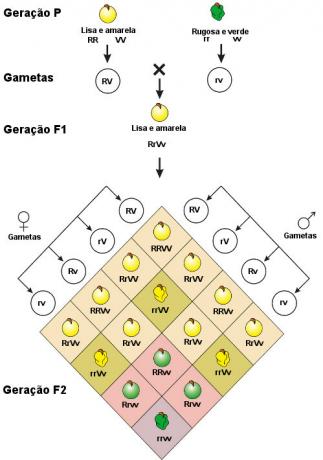Glucose is a simple carbohydrate of the monosaccharide type and represents the main source of energy for living beings.
It can be found free or combined with other types of carbohydrates.
In cells, glucose is the main source of energy, being used in the cellular respiration process. Besides being one of the main products of photosynthesis.
Chemically, it is a compound with formula C6H12O6. Therefore, it has 6 carbon atoms and an aldehyde group, which can have an open chain or ring-shaped.

Glucose in the human body
In humans, glucose is found in blood and obtained through food, where it exists in the form of more complex molecules.
The food to be used by the cells has to be transformed into smaller particles, where the nutrients, including glucose, are obtained. This transformation is carried out in the process of digestion.
During digestion, when blood reaches the liver, most of the glucose present in blood plasma is collected by hepatocytes. Thus, glucose is stored in the liver in the form of glycogen, for later use.
O starch, for example, one of the most abundant substances in the human diet, as it is a complex molecule, needs to be hydrolyzed in the digestive tract, before being absorbed.
By the action of amylase enzymes and then maltase from the enteric juice of the intestine, starch is broken down into monosaccharides. Thus, glucose molecules are absorbed by the small intestine villi.
After being absorbed by the cells, the glucose passes through the cellular respiration, a process in which several chemical reactions occur.
Initially, in the cytosol, glucose passes through the glycolysis, being broken down and transformed into other substances that go to the mitochondria, where the following steps occur.
During the cellular respiration process, energy, water and carbon dioxide are produced. Carbon dioxide is carried by the blood and eliminated during breathing and the energy produced allows the individual to carry out all of their metabolism.
Learn more, read also:
- Carbohydrates or carbohydrates: what are they?
- Digestive System, Digestive System
- Cell Metabolism
- Energy Metabolism
blood glucose levels
The reference values for fasting blood glucose levels are as follows:
- Hypoglycemia (Low Glucose): Below 70 mg/dl.
- Normal: Up to 99 mg/dl.
- prediabetes: From 110 to 126 mg/dl.
- Diabetes (High Glucose): Above 126 mg/dl.
Thus, the blood glucose concentration should be 70 to 99 mg/dl (fasting glucose).
The deficiency in the production of insulin it elevates the concentration of glucose in the blood, causing hyperglycemia or high glucose, which leads to diabetes.
Symptoms of high blood glucose are tiredness, blurred vision, excessive thirst, and increased urine output.
The process can also be reversed, when the body goes without food for a long time or due to illness. Thus, the amount of glucose in the blood decreases, resulting in hypoglycemia or low glucose.
Symptoms of low glucose are: rapid heartbeat, tremors, weakness, excessive sweating, sleepiness and fainting.
Insulin, a hormone synthesized in the pancreas, stimulates the uptake of plasma glucose and its conversion into glycogen in the liver. In this way, insulin causes a decrease in the concentration of glucose in the blood.
Get more knowledge about the monosaccharides.


